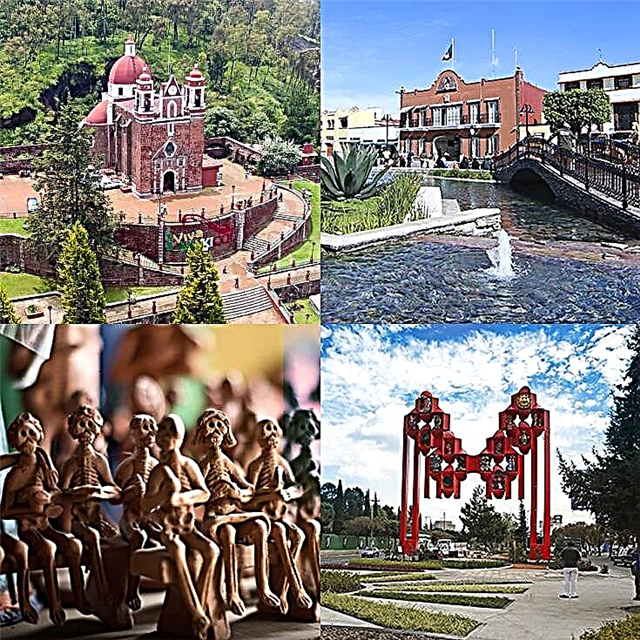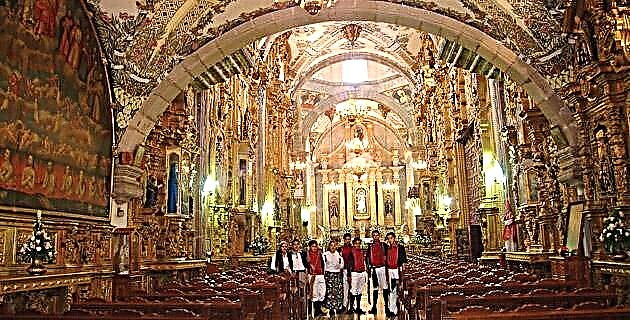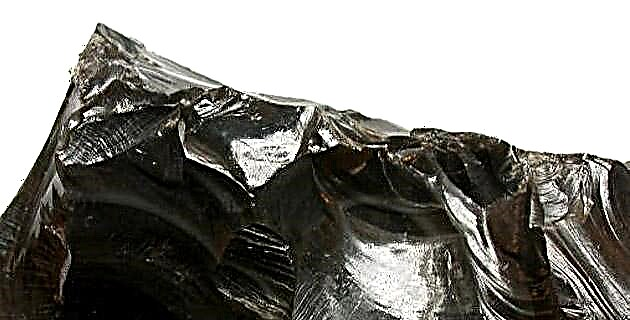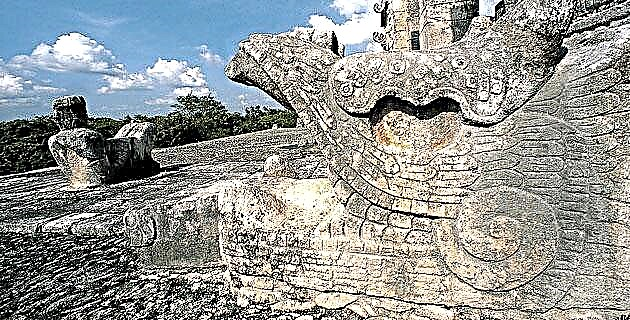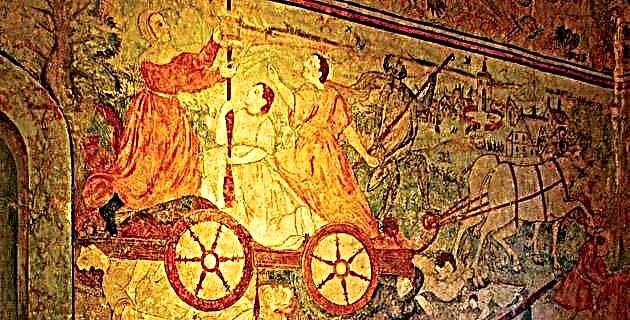
Undoubtedly, many of the mansions built in New Spain were replicas of some of the Iberian Peninsula. You can make an imaginary visit to one of them, rebuilding its different sections part by part, since the architecture of the time had guidelines, if not strict, then frequent to be able to speak of constants.
The houses of the immediate years to the Conquest looked like fortresses, with towers and battlements; Not even the convents were saved from this custom; After a while and thanks to the pacification, the confidence of the colonizers motivated the change in the facades.
In general, the residences were of two floors, protected by a great wooden door adorned with iron nails and around a quarry frame with some ornamentation or legends; in the central part of the cover there was a heraldic shield that indicated whether the owner belonged to the aristocracy or to the ecclesiastical hierarchy.
The residential plan traced the typical Spanish model of Roman inspiration. A central patio with low and high corridors, roofed with flat cedar or ahuehuete beams; the floors in patios and galleries were square-shaped ceramic tiles called soleras. The very tall walls were painted in two colors, with the narrowest strip close to the ceiling; emphasized the thickness of the walls, which allowed a seat to be placed on the windowsill, from where you could comfortably contemplate the outside. In the walls there were also holes to place candlesticks or lanterns.
The rooms varied according to the owner's social rank, the most common were the living rooms, the hall, the pantry, the cellar, the kitchen, where they usually also ate in the medieval way, since there was no proper dining room. At the back of the house were the corral, the hayloft and the stable, a small garden and perhaps a vegetable garden.
THE HOUSE OF DEAN DON TOMÁS DE LA PLAZA
Its facade has the sober beauty of the Renaissance style: Doric columns in the first body and Ionic in the second. The exterior shows the coat of arms of the prelate - the dean was the head of the council in a cathedral - with a Latin phrase that translated into Spanish means That the entry and the exit be in the name of Jesus.
The access staircase was rebuilt during the restoration work with original parts and allowed us to reach the upper floor, where the only two rooms, also original, are preserved, as the rest of the house was transformed into shops and annexes of a cinema.
THE MURALS
The first preserved room
Common crawl en The Sibylline, named for its walls decorated with representations of women who received from the god Apollo the gift of prophecy and divination, known as Sibyls. Here we observe with delight a parade full of color and plastic beauty; The Sibyls ride splendid steeds and wear luxurious dresses in the 16th century fashion: Eritrea, Samia, Persian, European, Cumea, Tiburtina, Cumana, Delphic, Hellespontic, Italian and Egyptian parade before our eyes, who according to a pious tradition prophesied about the advent and passion of Jesus Christ. It should be remembered that these women were painted by Michelangelo in the Sistine Chapel.
The cavalcade has presumably European landscapes as its background. The Sibyls are accompanied by a multitude of tiny characters, as well as a wide variety of animals: rabbits, monkeys, deer, tigers and birds. In the upper and lower parts of the scenes described, elaborate borders depicting fruits, plants, centaur women, children with wings, exotic birds and vases of flowers were painted as frames.
THE ROOM OF TRIUMPHS
This space was the bedroom of the dean Don Tomás de la Plaza, and when contemplating on its walls representations of Los Triunfos, a work in verse by Petrarca, we realized the refined culture that the priest possessed.
The Triumphs were written in hendecasyllable triplets and are an allegory not only of Petrarca's love for Laura, but also of the human condition. Broadly speaking, the poem shows the triumph of Love over men, but it is defeated by Death, over whom Fame triumphs, defeated in turn by Time, which yields to Divinity. On the four walls of the room these ideas from the poem are plastically recreated as a fact more to reflect than for simple amusement.
As in the La Sibilina room, in the Los Triunfos room we find all the scenes framed with elegant friezes filled with animals, plant motifs, women's faces, infantile fauns and children with wings. In both rooms the murals were painted with tempera by skilled anonymous artists.




